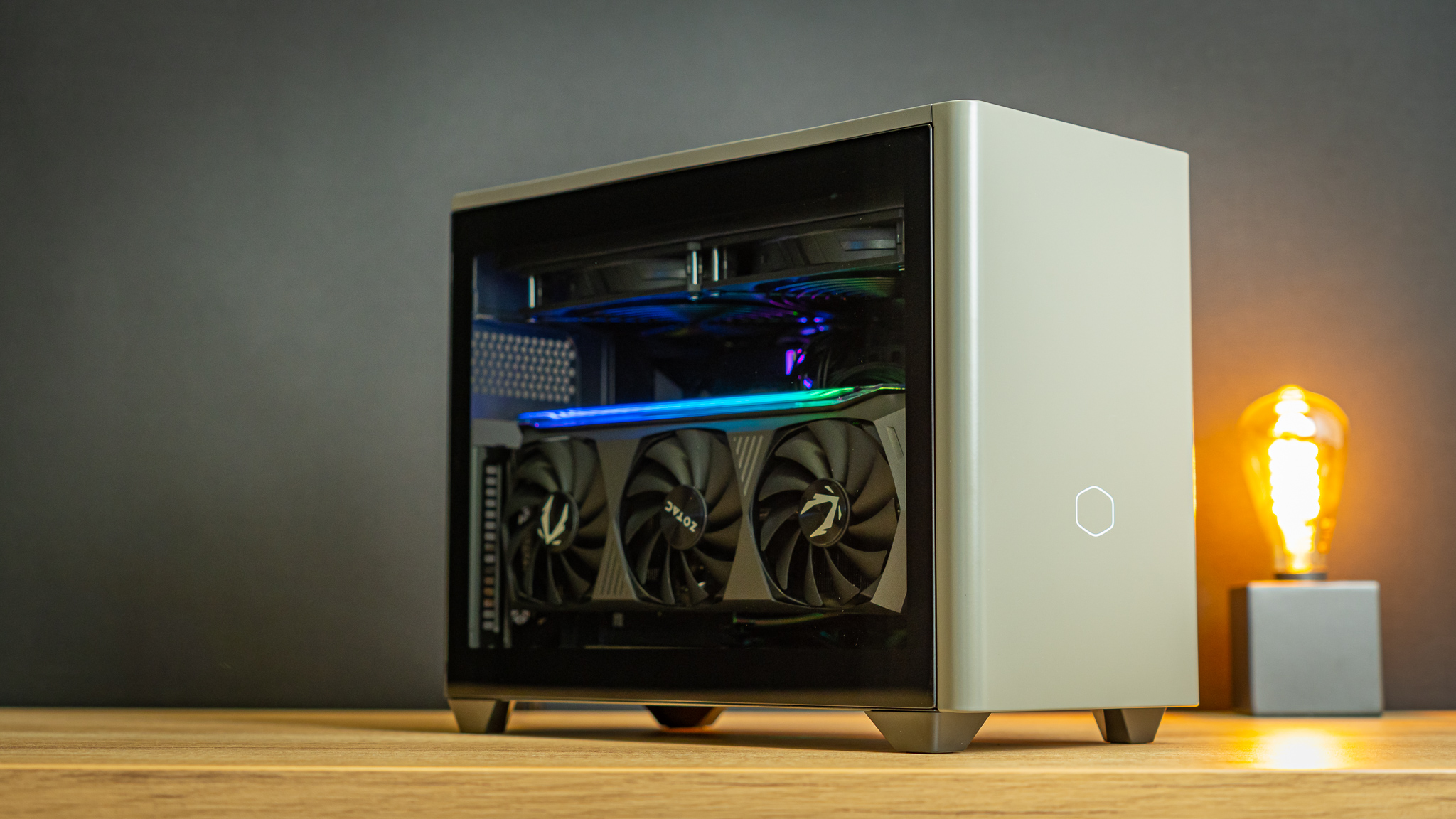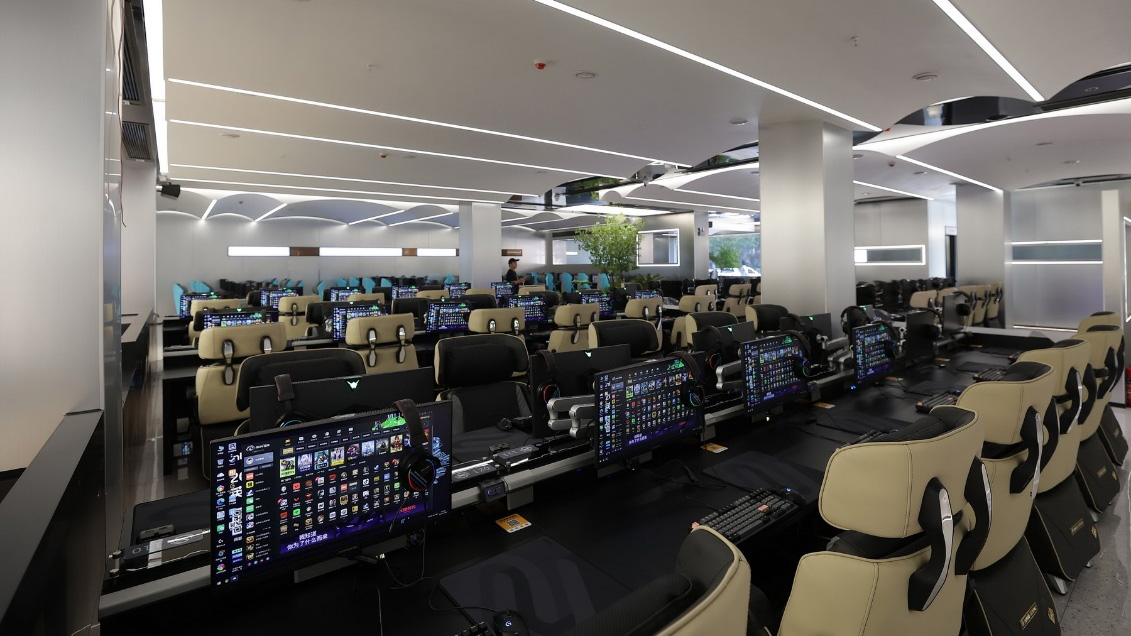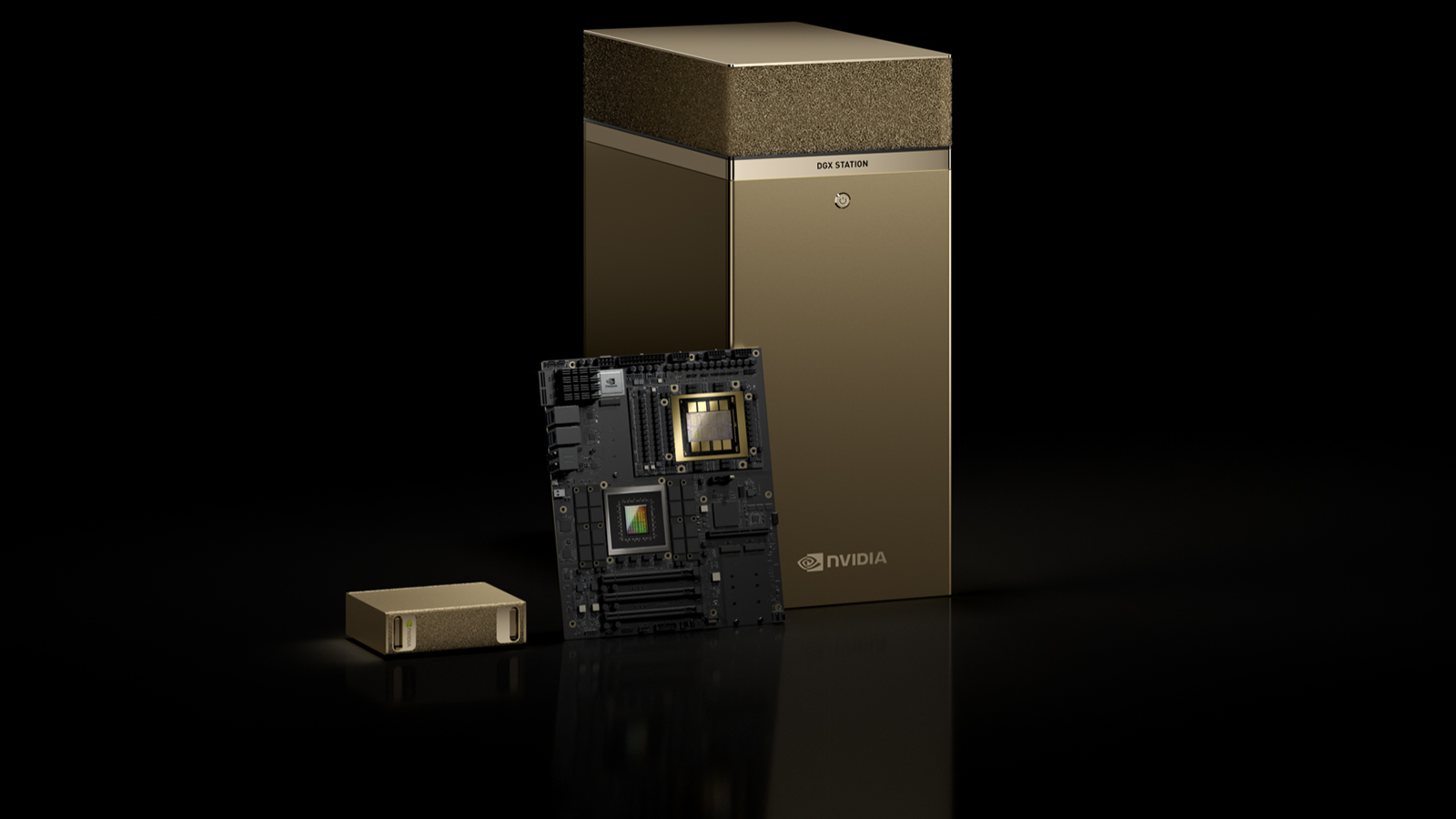50 years after its inception, desktop PCs are less popular than ever — a rise in PC gaming interest means it's in no danger of disappearing
But can a younger generation carry the torch, despite falling PC literacy?

The personal computer stands as the most influential invention of the late 20th century. Facilitating the breakthroughs of the microprocessor, the Internet, and the smartphone, the PC has forever changed how information is spread, how infrastructure is designed, and how governments fight wars. Modern life in many countries now revolves around computers.
As the decades march on, computing has evolved, shrinking from gargantuan sizes all the way to fitting in the palm of your hand or even being strapped to your wrist. So then, how has the desktop computer survived for over 50 years? (If we mark the "first" PC as the IBM 5100.) Laptops have outsold desktops since the mid-2000s, but the humble desktop remains. But why are people still drawn to larger, louder, and in many cases, less convenient computers?
Professional, hobbyist, and casual computing
Today, as with most creative fields, computer use falls under three main categories: professional use, hobbyist use, and casual use. Desktop PCs are typically used in two of these segments: professional and hobbyist.
Desktops are typically used in workloads that benefit from lots of power, ports, and I/O, such as video rendering and 3D work. Professional desktop users also find themselves sharing space with hobbyists, who crave high-power parts for intense workloads, typically in the form of PC gaming.
Laptops, tablets, and phones have entirely supplanted desktops in casual computer usage for most common users. As the era of the household PC has ended, replaced with personal smartphones and Chromebooks, the younger generation is becoming increasingly tech-illiterate.
The International Computer and Information Literacy Study (ICILS) has found that the average 8th grader’s computer literacy has progressively decreased over the last decade. Per the ICILS, in 2023, 24% of 8th-grade children tested worldwide failed to demonstrate even “a functional working knowledge of computers as tools”.

The ICILS measures computer literacy on a scale it calls the “CIL achievement scale”, measuring computer literacy based on a series of tasks, with skill measured in levels.
Level 1: A basic working knowledge of computers, opening links, and using word processors.
Level 2: Can complete information gathering tasks, like typing in a URL or finding info on a crowded page.
Level 3: Can identify potential threats and scams, in addition to being able to cite information on community websites.
Level 4: Can create balanced webpages, use filters on search engines, and identify sponsored content.
The proliferation of app-based computing, thanks to phones and Chromebook-style devices, has meant that young kids are unfamiliar with desktop-style computing, including navigating file structures and advanced programs. Therefore, kids are less likely to turn to desktops for their casual computer needs.
Likewise, many casual hobbyists looking to use computers for hobbies such as art and music are becoming more likely to turn to tablets or laptops, which offer a similar easy-to-digest approach.
Of course, the desktop still has a place in the hearts of many hobbyist and enthusiast PC users. And while other fields and interests may play a part in the survival of the desktop, one niche has perhaps the greatest claim in keeping it alive outside of purely professional interests: PC gaming.
PC gaming's impact on the desktop PC market

PC gaming is not just a boon for desktops; it is a bright spot for the entire gaming industry. According to investment advisor group Epyllion, PC gaming spending has consistently beaten out consoles, with users choosing to spend their hard-earned cash on more PC games than consoles. In 2024, PC gaming revenue totalled $23 billion, while console revenues sit at $16 billion.
This signals to game developers and their corporate owners exactly where the most profitable parts of their audience live. If PCs are outpacing the likes of PlayStation, Nintendo, and Xbox's console division, then clearly, more titles will be developed and released for PC users.
Unlike consoles, PCs also have much better performance than console counterparts at higher price tiers, and also carry more clout within gaming culture. The dream of owning a “battlestation” often pushes gamers into the larger desktop form factor.
PC gaming's current growth can also be attributed to three major sources: esports, the Asia/Pacific market, and Roblox. The esports industry is currently worth over $600 million and is expected to hit $2 billion in 2032. Most major esports titles, like Counter-Strike, League of Legends, and Valorant, are played on PC. New esports fans and hopeful competitors need to join the PC market to access the games and to become entrenched in its associated subculture.

Asia and the Pacific are arguably the current home of culture for PC gaming. More Steam users use Chinese than English as their default Steam language, and Steam’s daily activity consistently peaks when Chinese users are awake and off work. Asian-made games are winning the gaming press’s greatest awards—like Black Myth: Wukong winning multiple Game of the Year awards—and attracting the most players, like PUBG’s record-setting 3.2 million concurrent users.
Even Western games like Fortnite are catering to Asian culture, with their in-game events honoring the Lunar New Year, and the addition of cosmetics representing K-pop idols. The gaming market is exploding in China and the rest of the Pacific, with PC's being a particular focus, thanks to factors like esports, PC café culture, and an increase in homegrown game development talent.
One thing that the Asian and U.S. gaming markets have in common is what the kids are playing: Roblox.
Roblox is considered to be the most popular game platform for young Gen Z and Gen Alpha, attracting 97.8 million average daily active users in Q1 2025. This dwarfs Steam’s current daily average of 40 million players in-game, and while much of this Roblox traffic is coming from console and mobile players, Roblox users are heavily incentivized to migrate to PC.
Paid games on Roblox are only accessible on PC, and Roblox pushes kids to develop their own “experiences” (Roblox’s name for games) on the PC client, with many of the largest games on the platform recruiting kids to their programming and development teams, often for real-life money. As the world’s largest online game platform for kids, Roblox is a major boon for PC gaming’s newer generation of users.
Do kids really know how to use a PC?
While PC gaming as a whole is undergoing growth, can esports and Roblox be enough to keep the desktop around? Famously, esports titles and Roblox experiences do not require the highest-end hardware to run, often working fine on entry-level laptops. This means that desktop gaming PCs have some serious challenges to address.
While the younger generation is being steered toward PC gaming by those factors, desktop PCs have several hurdles to overcome, which might be too difficult for some. With youth computer literacy rates falling year by year, and more kids opting for tablets and smartphones over desktops, for many, File Explorer appears to be just as unparsable as the command line.
If young people are going to break into a Windows-based world, they’re more than likely to do it on a laptop. Laptops first outsold desktops in 2005, and have held the crown every year since 2007. 20 years of market dominance, with the lead growing in each consecutive year, puts the laptop on a desktop-threatening incline.
The AI inquisition

AI is making waves in the consumer tech industry. No matter where you look, AI PCs are being marketed to users, and CPUs now ship with dedicated accelerators, designed to drive local AI workloads.
AI Inferencing demands on local desktops are increasing due to the rollout of local features, such as Nvidia's Chat with RTX, in addition to AMD's chatbot alternative. These products require you to run a local AI inference model to handle them. Features from Adobe's Creative Suite already benefit from being connected to an AI cloud, and it's reasonable to assume that local AI will begin to fill that space as performance across devices improves.
This is also beginning to translate to gaming. Skyrim and Fallout 4 mod, Mantella, enables users to hook up NPC "brains" (prompted by an LLM running inference locally, or by hooking up a cloud API key), to generate speech with players. Making use of local speech-to-text and text-to-speech models to power it, highlighting a glimpse at a potential future of how games are played. Nvidia is wise to this, too, rolling out ACE Autonomous NPCs across several games released this year.
There are a litany of other use cases across industries that highlight how AI is being integrated into software, like video conferencing effects, security applications to detect phishing, and more. Many of these AI inference tasks demand rapid hardware and require excellent power efficiency, underscoring the need for dedicated hardware that can run AI tasks more efficiently.
So, while there aren't many stand-out use cases right now, corporate interests and software developers are focusing on increasing AI inference support and compute horsepower in local systems. Canalys predicts that 60% of PCs will be AI-capable by 2027, marking a huge amount of corporate interest and growth in the segment, which will ultimately affect desktops. But, there's also another workload that some power-users will also demand.
Local AI training requires extremely high performance, and you're not getting that out of a high-end laptop, even with dedicated accelerators. While discerning users can splash out for the RTX PRO graphics cards or use high-end consumer GPUs, the demands of Local LLM training and usage require a large amount of VRAM, which many consumer-level desktop PC products can't keep up with.
The solution? A small satellite computer, the DGX Spark, specifically designed to handle local AI workloads, or so Nvidia hopes. The current-generation flagship from Nvidia, the RTX 5090, boasts speeds of up to 3,352 AI TOPs performance. However, it only ships with 32 GB of VRAM, limiting the size of the local AI models you can run on it.
The DGX Spark is slower, at just 1,000 AI TOPs, but can run much larger models, at up to 200B parameters, thanks to 128 GB memory capacity. Two of them can even be linked to create a 256GB pool of memory, thus enabling support for much larger models.
Nvidia also plans to launch the DGX Station, a souped-up, desktop-level variant that will ship with its GB300 superchip and 784 GB of memory in tow. So, for developers, researchers, and scientists, there might be nothing better for local AI work than a trusty desktop PC.

The state of Moore’s law is very much up for debate, but everyone can agree that generational improvements have significantly slowed across the PC hardware industry. Intel's most recent CPU family fell short of typical generational improvement trends, and Nvidia’s RTX 5000-series makes most of its performance gains by increasing power demands and optimizing software.
Eventually, Moore’s Law will be moot, once we hit the material limits of how small a process node can go. As for what comes after that? Quantum? AI-driven breakthroughs? We can only guess at this point.
OS choices are now simpler, Windows and MacOS have settled into a cold war, and the days of bombastic new operating system releases attracting customers are long behind us. The launch of Windows 11 in 2021 was followed by the Copilot+ initiative, which felt more like a bad joke than any kind of serious push driving users towards Windows. New OS releases used to be big events, attracting new users, but the buzz just doesn't feel the same, especially when compared to the late 90s.
With the days of new operating systems and bombastic performance increases seemingly in the past, what allure does the next generation of PCs have? Are desktops and laptops alike destined to fall into a hole of negligible improvements, with eventual obsolescence being the only reason to upgrade?
Desktops are dead, long live the desktop
There are plenty of reasons to argue that the age of the desktop is currently in its last days, that culture has finally moved on. But it's almost certain that this will not come to pass.
Cultural drift can only move the dial so far. The majority of people working and living on the earth today might move away from desktop PCs, but there will always be dedicated hobbyists who want to get the most out of their hardware, and for them, the desktop PC is the best way to do it.
Just as the car revolutionized the way people move, the computer is following a similar path. Hot rodding cars never went away because people bought other vehicles; it just became a subculture. Now, with the younger generation lulled in by the RGB glamor of a gaming PC over a staid-looking PS5, desktop PCs might be moving towards a similar trajectory.
The desktop PC form factor has a deeply established user base, made up of a diverse demographic. The desktop is entrenched enough that it may never fully die in the face of laptops, tablets, and portable devices.
There will always be someone booting up their 20-year-old Core 2 Duo and loading a game of Team Fortress 2. There will always be a young kid who sees a shiny battlestation online and tries to shove a new graphics card into their aging machine.
Whether to game, to work, or to create, there will always be someone who chooses to use a desktop PC. It's us, and the next generation of tinkerers, tweakers, and obsessives who will keep the flame of desktop PCs and DIY PC building alive.

Sunny Grimm is a contributing writer for Tom's Hardware. He has been building and breaking computers since 2017, serving as the resident youngster at Tom's. From APUs to RGB, Sunny has a handle on all the latest tech news.
